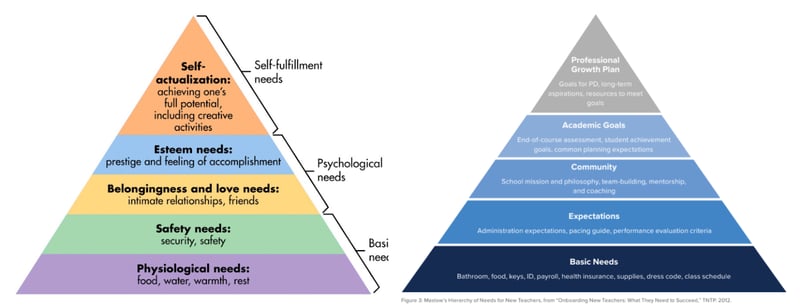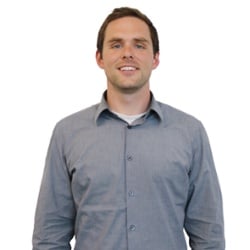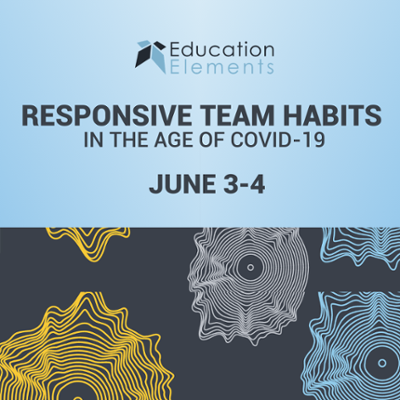
The Known Unknowns of Teacher Recruitment and Retention
Teacher Retention | School Leadership
Donald Rumsfeld once said that there are three things we know - the things we know, the things we know we don’t know, and the things we don’t know we don’t know - and that it’s the last category, the unknown unknowns, that tend to be the most difficult things we encounter. The vulnerability of our global economy to a novel coronavirus may go down as one of the greatest unknown unknowns in our lifetime. And while the dust is yet to settle, it is safe to say that we will never be the same knowing now what we didn’t before.
The bright side of surfacing a gigantic unknown unknown is that it sheds light on things we never considered, leaving us more enlightened and prepared for future unknowns. It’s easy to see that airline travel is safer now than it was before 9/11, or that our mortgage practices are better regulated today than in 2008. The collective experiences of unexpected disruptions are catalysts for improvement and innovation.
While educators may feel overwhelmed looking ahead through a still-blurry post-COVID-19 lens, the realities of a pandemic are at least one less unknown unknown. Of the numerous new known unknowns we now face, few are as pressing as the effect the pandemic will have on our already fragile teacher workforce. Social distancing, an endless list of competing operational contingencies, and an evolving timeline for a ‘return to normal’ are challenging our traditional forms of recruitment, development, and retention.
As both educators and employers, school and district leaders have a unique opportunity today to examine our human capital efforts that will leave our school systems, and ultimately our students, better prepared for the future. Below, we consider three new known unknowns and how we can act on what we do know, now.
1. We don’t know the full impact this will have on our workforce, but we do know that we will need to rethink our traditional teaching, staffing, and professional support models. States and national organizations are just beginning to understand how this will affect budgets and teacher shortages. States like Georgia are announcing cuts as large as 14 percent across all agencies, and the Council for Great City Schools predicts up to 300,000 educator positions are at risk. In fact, research suggests that our teacher workforce is still recovering from the last 2008 recession.
As we near summer break, districts are wrestling with three re-entry scenarios:
1. A return without major physical distancing or other public health mitigation strategies
2. A return with physical distancing and/or other public health mitigation strategies
3. An extension of distance learning
Regardless of budget projections, leaders should take time to consider teaching and learning for each back-to-school scenario, crosswalking these with respective demands each could place on staffing and professional learning. Districts might look to schools that excelled with hybrid or flipped classrooms or survey their own teachers on newly developed skills and practices to help rethink instructional models and staffing strategies. In a time that has required innovation, districts have a unique opportunity to learn new and previously unimagined practices.
We also know that research suggests that administrative support has the strongest relationship with teacher turnover, so it is essential to build and sustain a remote work culture. Leaders should take time to empathize with the new experience of their workforce, and outline the specific steps that are in place to address the basic needs, expectations, community, academic goals, and professional growth of a newly remote staff. Doing so might open up new understandings of flexibilities over their time, space and/or content that were previously unavailable in brick and mortar settings.

2. We don’t know if this will happen again, but we do know that we must revisit the skills and readiness we assess and communicate. Even if we return to school in the near future, scientists are still predicting the odds of future waves of infection. And in the event that we do develop a vaccine, treatment, or global herd immunity, our collective consciousness will not forget the possibility of a future pandemic.
The new demands on districts to demonstrate virtual readiness need to be reflected in how we assess incoming teachers. Experience or readiness to engage with digital platforms like Google Classroom, Zoom, or learning management systems may shift from ‘nice-to-have’ to ‘must-have’ competencies on our candidate scorecards.
On the flip side, we can also assume that candidates will be looking to assess the district’s virtual readiness. The tools, training, and ongoing support for digital learning may now weigh greater in a school or district’s employee value proposition. Hiring teams should clarify these supports in early recruitment and engagement of candidates, include them on websites, within employee testimonials, in social media campaigns, and beyond.
3. We don’t know how long this will last, but we do know that we must recruit virtually to fill existing demands. Whether it is in months, by region or location, or in phases, we don’t know when, or if we will ever, return to our previous normal. Predictions are changing daily, and responses will continue to vary by states or localities. We can’t put a finger on if or when our traditional approaches to teacher recruitment and retention may return.
Yet we still have an estimated 110,000 vacancies to fill across a shared virtual playing field. Our digital presence is more important than ever, and social media platforms are the most well-attended arenas. There aren’t conferences for districts to showcase work or build branding. The winners for top talent will be the ones with great social media presence.
Related Reading: Is Marketing Your School District a Thing? Part 3: Social Media
Teams should also consider the virtual candidate experience. School and hiring teams may consider following the lead of Amazon and other companies sharing virtual interview tips with their candidates ahead of interviews. Though in-person interactions are temporarily unavailable, seek candidate opportunities for virtual interactions with other teachers or even students.
Lastly, to stay in the game leaders need to invest time and resources to develop the capacity for virtual interviewing. This includes reevaluating the questions that are asked, reestablishing interview guides and facilitation roles for your teams, and aligning on best practices for virtual facilitation.
In a recent discussion about the education inequities surfaced by COVID-19, New York City Schools Chancellor Richard Carranza told listeners to “never let a crisis go to waste.” He reminded us that catastrophes, no matter how devastating, provide an opportunity to ignite shifts in mindset and practice. Right now, the uncertain realities of COVID-19 are compounding the already great challenges of recruitment and retention. But the crisis also brings us an opportunity to challenge the conditions we know, and reimagine the way we recruit, develop, and retain our most valuable human resource - we must not let it go to waste.
About Daniel Johnson - Guest Author
Daniel Johnson is a former Associate Partner at Education Elements and works with district and school teams to develop responsive, stakeholder-driven practices that improve student outcomes. In his seven years at Education Elements, Daniel has led projects in mid- to large-sized school districts across six states, and worked with state-level departments of education to lead instructional initiatives across Georgia and Kansas. He specializes in instructional readiness, strategic planning, and teacher recruitment. Daniel is a former science teacher, having taught in school systems in Mississippi and Brooklyn, NY. During his time in Mississippi, Daniel served on the school’s leadership team working with state consultants on school improvement efforts. In New York, Daniel worked for the charter network, Achievement First, working with a team of science teachers to build the network’s inquiry-based science curriculum. He holds a B.A. degree in Political Science, a B.S. degree in Journalism, and a Master's degree in Teaching. Daniel is originally from Grand Rapids, Michigan and currently lives in Washington, D.C.



